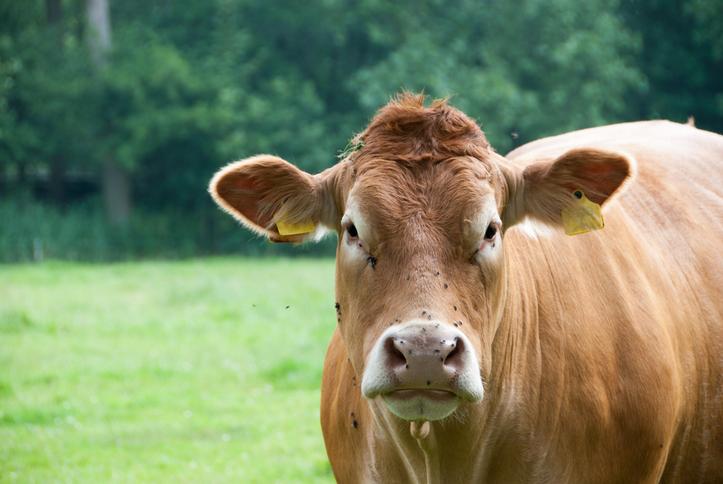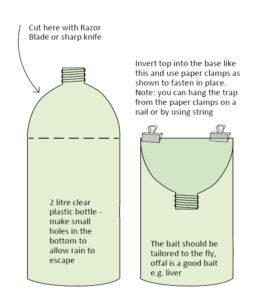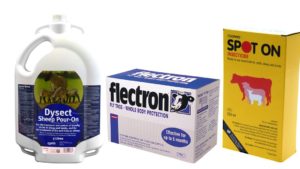
Flies; annoying your herd, your flock and you!?
By the time you notice cattle or sheep being troubled by flies, a population explosion is already taking place. Flies not only annoy your herd and flock, they can cause major economic production losses through reduced feed intake which impacts productivity. Studies in cattle have shown, the production loss caused by flies can be up to 0.3kg a day Growth Rate loss and up to 0.5l a day milk loss (Jonsson et al, 1999). In sheep, studies have shown that fly worry has caused weight loss of up to 5.5 kg over four to six days and reduced wool production has by up to 26 per cent. They attack, irritate and feed on cattle and other animals. Flies can be involved in the transmission of diseases such as pink eye and summer mastitis. Midges also spread viruses such as Bluetongue and Schmallenberg. Blowflies are important due to the damage caused by their maggot stages. When considering treatment, it is important to consider all species of flies that can cause disease in your animals. Be sure to treat early enough to control the rapid population growth before they start to affect your stock and treat regularly throughout the season.Monitor fly levels
To help sheep farmers, SQPs and vets assess the parasite risk in their area; Zoetis are running the successful Parasite Watch scheme for the third consecutive year.
18 farms involved in the scheme will have faecal samples taken every two weeks to detect major stomach worms and Nematodirus. As part of Parasite Watch, farmers involved in the scheme will also be using fly traps to monitor fly populations on the farm. Fly traps will give you an indication of the fly challenge.
As soon as you start seeing flies in the trap, then you know they are going to be bothering stock and you may want to take appropriate action. Fly traps are available here to buy or you can simply make your own.How to make a fly trap

- Take a two-litre plastic bottle and cut the top third of the bottle off.
- Make some small holes at the end of the plastic bottle in order to allow rainwater to escape.
- Invert the top of the bottle into the remainder of the two-litre bottle and seal it with clips/paper clamps to fasten it in place.
- Place the bait, which can be made up of dog food, or an offal-based product in the bottom of the bottle.
- Hang the bottle on a fence or gate post by fixing string to the paper clamps attached to the bottle.
Treatment options:
- Fly & Lice Spot OnTM controls biting and nuisance flies for up to 8 weeks in cattle, with a zero-day milk withdrawal, in sheep, it will treat blowfly strike. The active ingredient has proven activity against midges.
- DYSECT® comes in cattle and sheep formulations and gives up to 8 weeks protection in cattle, with a zero-day milk withdrawal and prevents blowfly strike for up to 10 weeks in sheep.
- FlectronTM is a season-long fly control tag for cattle, offering labour savings throughout the grazing season, it has a zero-day meat and milk withdrawal.

Control your flies
StowAg stock an excellent range of fly control and worming products for sheep and cattle. If you would like to see how we can reduce your flies give us a call on 01451 830 400 and talk to one of our SQP's to discuss your requirements and advice. Fly & Lice Spot On contains deltamethrin, POM-VPS. All Dysect brands contain alphacypermethrin, POM-VPS. Flectron Fly Tags contain cypermethrin (cis 50:trans 50). POM-VPS. For further information, please see the product’s SPC or contact Zoetis UK Limited, Walton Oaks, Dorking Road, Tadworth, Surrey KT20 7NS. www.zoetis.co.uk. Use medicines responsibly (www.noah.co.uk/responsible).
Fly & Lice Spot On contains deltamethrin, POM-VPS. All Dysect brands contain alphacypermethrin, POM-VPS. Flectron Fly Tags contain cypermethrin (cis 50:trans 50). POM-VPS. For further information, please see the product’s SPC or contact Zoetis UK Limited, Walton Oaks, Dorking Road, Tadworth, Surrey KT20 7NS. www.zoetis.co.uk. Use medicines responsibly (www.noah.co.uk/responsible).
- Jonsson et al (1999). Med. Vet. Entomology 13, p372-376
- Australian sheep animal welfare senate meeting 1985
